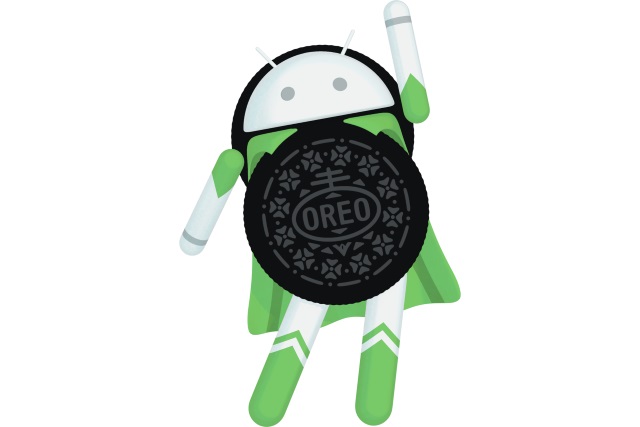Here's what's new in Android 8.0 Oreo

Yesterday Google finally revealed Android 8.0, also known as Oreo. Aside from the name, release date and the question of whether individual handsets will be treated to an upgrade, the query on most Android users' lips is "what's new?".
Google says that one of the primary aims with Oreo was to create "fluid experiences," as well as improving speed and efficiency. The company says that it is "smarter, faster, more powerful and sweeter than ever" -- but what does this actually mean in terms of new features?
The rollout of new versions of Android is notoriously slow, but Pixel, Nexus 5X, Nexus 6P, Pixel C and Nexus Player users shouldn't have to wait too long to get hold of the new build. Google also says that Essential, General Mobile, HMD Global Home of Nokia Phones, Huawei, HTC, Kyocera, LG, Motorola, Samsung, Sharp and Sony are scheduled to push out Oreo, and you can add OnePlus to that list as well.
Google has shared the following list of new features that await those who are lucky enough to be treated to the upgrade:
- Picture-in-picture lets users manage two tasks simultaneously on any size screen, and it's easy for apps to support it. (Shown at right)
- Notification dots extend the reach of notifications and offer a new way to surface activity in your apps. Dots work with zero effort for most apps -- we even extract the color of the dot from your icon.
- Autofill framework simplifies how users set up a new device and synchronize their passwords. Apps using form data can optimize their apps for Autofill, and password manager apps can use the new APIs to make their services available to users in their favorite apps. Autofill will roll out fully over the next few weeks as part of an update to Google Play Services.
- System optimizations: We worked across the system to help apps run faster and smoother -- for example, in the runtime we added a new concurrent compacting garbage collection, code locality, and more.
- Background limits: We added new limits on background location and wi-fi scans and changes in the way apps run in the background. These boundaries prevent unintentional overuse of battery and memory and apply to all apps -- make sure you understand and account for these in your apps.
- Complementary Android Vitals dashboards and IDE profilers: In the Play Console you can now see aggregate data about your app to help you pinpoint common issues - excessive crash rate, ANR rate, frozen frames, slow rendering, excessive wakeups, and more. You'll also find new performance profilers in Android Studio 3.0, and new instrumentation in the platform.
- Autosizing textview: Use autosizing TextView to automatically fill a TextView with text, regardless of the amount. You can create an array of preset text sizes, or set min and max sizes with a step granularity, and the text will grow and shrink to fill the available TextView space.
- Fonts in XML: Fonts are now a fully supported resource type. You can now use fonts in XML layouts and define font families in XML.
- Downloadable fonts and emoji: With downloadable fonts you can load fonts from a shared provider instead of including them in your APK. The provider and support library manage the download of fonts and shares them across apps. The same implementation also supports downloadable emoji, so you can get updated emoji without being limited to the emoji built into the device.
- Adaptive icons: You can now create adaptive icons that the system displays in different shapes, based on a mask selected by a device manufacturer. The system also animates interactions with the icons, and uses them in the launcher, shortcuts, settings, sharing dialogs, and in the overview screen.
- Shortcut pinning: App shortcuts and homescreen widgets are great for engaging users and now you can let users add and pin shortcuts and widgets to the launcher from within your app. There's also a new option to add a specialized activity to help users create shortcuts. The activity is complete with custom options and confirmation.
- Wide-gamut color for apps: Imaging apps can now take full advantage of new devices that have a wide-gamut color capable display. To display wide gamut images, apps enable a flag in their manifest files (per activity) and load bitmaps with an embedded wide color profile (AdobeRGB, Pro Photo RGB, DCI-P3, etc.).
- WebView enhancements: In Android Oreo, we've enabled WebView multiprocess mode by default and added an API to let your app handle errors and crashes. You can also opt in your app's WebView objects to verify URLs through Google Safe Browsing.
- Java 8 Language APIs and runtime optimizations: Android now supports several new Java Language APIs, including the new java.time API. In addition, the Android Runtime is faster than ever before, with improvements of up to 2x on some application benchmarks.
Google has also shared a video that serves as something of an introduction to Oreo:
You can find out a little more over on the Android Oreo page or on the Android Developer blog.
